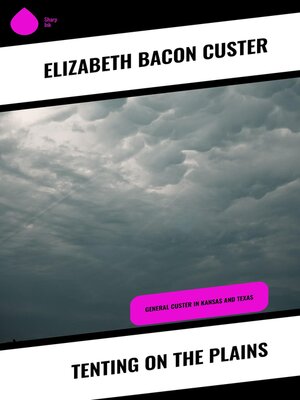
Sign up to save your library
With an OverDrive account, you can save your favorite libraries for at-a-glance information about availability. Find out more about OverDrive accounts.
Find this title in Libby, the library reading app by OverDrive.



Search for a digital library with this title
Title found at these libraries:
| Library Name | Distance |
|---|---|
| Loading... |
In "Tenting on the Plains," Elizabeth Bacon Custer offers a vivid account of life on the American frontier, particularly during the tumultuous years of the Indian Wars. This autobiographical narrative artfully combines personal anecdotes with historical reflections, encapsulating the struggles and joys of military life. Custer's engaging prose, marked by a blend of romance and realism, invites readers into the vibrant world she inhabited beside her husband, General George Armstrong Custer. Written in the late 19th century, the book provides crucial insights into the gender dynamics of the time, portraying the challenges faced by women in military camps while also highlighting the broader context of westward expansion and its contentious impact on Native American societies. Elizabeth Bacon Custer, born into a prominent Ohio family, emerged as a notable figure in her own right, influenced by her upbringing and marriage to the charismatic yet controversial General Custer. Her experiences as a camp follower and eventual chronicler of army life are deeply intertwined with her personal narrative, giving her writing a unique authenticity. Her efforts to document the complexities of frontier life stem from her desire to preserve her husband's legacy and the cultural nuances of the period amidst the backdrop of impending tragedy. For readers interested in narratives that capture the intersection of personal and national identity, "Tenting on the Plains" is a compelling must-read. Custer's articulate reflections not only illuminate the feminine perspective within a predominantly male historical narrative but also serve as a window into the prevailing attitudes of her time. This book is essential for anyone seeking to understand the multifaceted experiences of life in the 19th-century American West.







